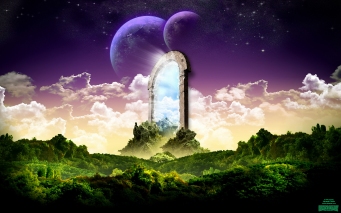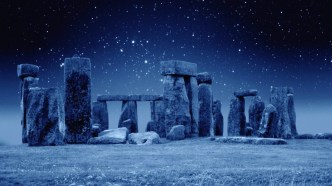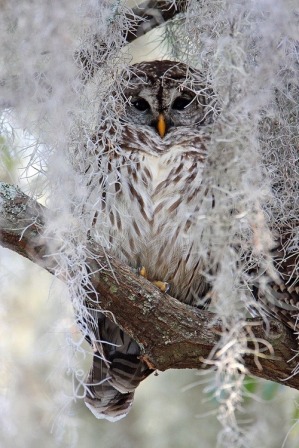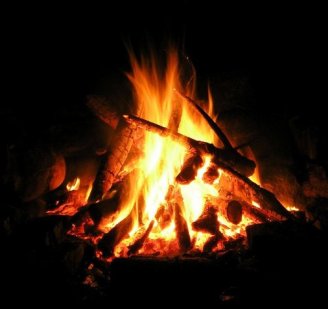Archives
Winter – Time of Deepening Darkness and the Black Horse of Winter
For many, winter is a testing period, especially for those who are old or infirm. Winter, the Time of Deepest Darkness, the time when the world sleeps, is also a time of healing and regeneration in preparation for the rigours of the coming of spring. During the Deepest Darkness, Grimalkins retreat into the safety of the clowders and settlements, to roaring hearths and hot meals. At Deepest Darkness, when Shamash’s supremacy is diminished by the Black Horse of Winter, the power of the Sun-Cat is not completely weakened by the loss of his magnificent mane of sun-rays. In these most shadowy of days, we are not forsaken but even the mighty Sun-Cat must rest and regain his strength. For now, The Black Horse of Winter and Inghira Moon-Cat rule these long nights and starry skies.
Winter is a productive time even though the earth seems to be sleeping. While the ground is covered in a deep quilt of snow, seeds are germinating below the earth and, like the seeds, Grimalkins are busy making do and mending. While the hard work of harvesting and gathering is at an end, the more creative pursuits of making Yule/Mordrach gifts and decorations begins.
Hibernation and retreating into the safety of the clowders and settlements is not just practical and life-saving, it is also a symbolic act – all must return to the earth, the body of the Great Mother, once a year, for regeneration and rebirth. We may lament the passing of the warm, heady days of summer but we rejoice that the toil of the past two seasons is over and we can finally enjoy the fruits of our labours. Winter is the final act in the great opera of the year, a time when we gather together with family, friends, neighbours, acquaintances and strangers and reaffirm our bonds of kinship with one another and express our gratitude for all that we have.
Shamash Sun-Cat and the Black Horse of Winter
Every year, at Oliach (autumn equinox), a great battle begins between two forces of nature. The astronomical observance of the autumn equinox last for three days and, on the first day of Oliach, Shamash Sun-Cat begin his epic battle with the Black Horse of Winter. This battle lasts until the final day of Oliach when the Sun-Cat is defeated and overcome by the Black Horse. During the battle, the Black Horse tears out the Sun-Cat’s mane and so his power wanes. As his mane is destroyed, the power of the suns wane until they almost disappear from sight at the midwinter solstice, at Mordrach. It is during this time the Black Horse reigns, bringing the snows and ice to the world. Shamash, his mane now gone, retreats into the belly of the earth until it starts to regrow. On the third day of the midwinter solstice, the first golden hair appears on his forehead and this heralds the return of the suns. Now his strength begins to return. But it will be an arduous process and the winter is long; he must rest and regenerate so he can fight her once more and bring light back to the world once more.
While the black horse of Winter may maim, defeat and banish Shamash Sun-Cat to the bowels of the earth, she is not an evil creature. She is an aspect of nature and creation like Shamash or Inghira. While many lament her coming, she serves an important purpose; she brings the winter, the dark, feminine half of the year when the earth must rest otherwise it will wither and die. Too much warm, masculine energy depletes and exhausts. There must be a balance of the masculine and feminine and the battle of Shamash and the Black Horse represents this. It is the balance of life. The earth and its creatures must rest. The Black Horse may seem harsh, but she is just and wise.
The Black Horse also represents the Great Mother Goddess in Her Crone aspect – deep, powerful, strong, introspective. She goes paw-in-hoof with Inghira Moon-Cat, the bringer of sleep, dreams, and healing through darkness. The Black Horse also brings these things but on a larger and longer scale, of days, months, years and aeons, rather than the minutes and hours by which we live by. The continual cycle of wakefulness and hibernation the earth must endure ensures it and its creatures regenerate and renew endlessly over many ages. This has been the task of the Black Horse and Shamash Since the Creation in the First Days of the New Dawn.
She is not a force to be feared even though she may bring death to many. But after the winter solstice, her power begins to fade. Shamash’s mane begins to grow and the world is preparing for the re-emergence of the light. At Falia, the vernal equinox, Shamash returns to the world and defeats the Black Horse of Winter and drives her back to the high north where she will stay until Oliach. As Shamash’s mane grows the suns become warmer and climb higher in the sky until, at Adrach, the summer solstice, it is fully grown and he, and the suns, are at full power.
https://www.grimalhamepress.co.uk/dance-of-the-fire-cat
The Grimalkin Wheel of the Year – Morchuria, Day of the Ancestors
The moon festival (moon festivals are held from the autumn equinox to the beginning of the Far Pavilions’ new year) of Morchuria is held between the festivals of Oliach (autumn equinox) and Mordrach (midwinter) in the Grimalkin calendar. At this time the year descends into darkness and the observance marks the beginning of the winter. Morchuria is the Grimalkin remembrance festival where we ask those who have departed this mortal life to join us in our celebrations. Vigils are held in the forest, at barrows and burial cairns, in groves and in homes. Candles are lit and incense is burned to invite the departed and the spirits of the forest into the household to sing, dance and feast. All merriments are held in their honour. The official remembrance ceremony takes place in the Central Council Chamber and we sing songs and read poems to remember our loved ones.
After the initial ceremony and the invocation to the spirits at sunsdown, all gather at the torch-lit Henge and hold a banquet. Huge cauldrons of stew, casseroles and hot fruit puddings bubble deliciously over roaring fires, all washed down with hot spiced mead, warm fruit cordial or spiced milk. Balefires are lit under which potatoes and apples cook. All merriments honour the Great Mother in her Dark Aspect – the bringer of night, of winter, and of arcane secrets. All around the forest hollowed out ‘neeps glow with candles, their odd faces leering through the dark to frighten away evil.
Morchuria is also known as the Day of the Elders where the elders of the clowder are honoured and given gifts. Elders are the cornerstone of Grimalkin society – all wisdom, skills and trades are passed down from the old ones. They are revered as great teachers and they represent the Great Mother in her Crone aspect – the tester and initiator of souls. The young ones (and older ones who should know better) dress up in costumes and scare each other in the dark for it is the only time they can stay up all night without going to bed. Adults dress as demons, swarthy spirits and shades to frighten the young ones who then converge upon the ‘evil-doers’ and ‘vanquish’ them with sticks. This is a symbolic gesture; badness and negativity are driven out by the light and innocence of youth and, by doing this every year, it not only drives away malevolent spirits, but teaches youngsters to never fear the darkness.
Ancestral Shrines and Honouring the Spirits
“A great oak does not mourn the loss of a single twig.”
Old Grimalkin Saying.
Ancestral shrines are found in all Grimalkin homes. They consist of small niches or spaces within the household sometimes with statuettes and items belonging to the deceased. Some items may represent the trade or profession of the forebear. Candles are lit and flowers placed on the shrine to mark anniversaries such as the ancestors’ birth and death. At Morchuria, the Day of the Ancestors, offerings of food and wine are placed on the shrine and the departed are invited into the home so they can celebrate along with the living. The shrine will be in a private part of a Grimalkin’s dwelling, such as a bedroom or ante-room. The deceased will then take his or her place on the shine in the form of a figurine, or an object that reminds the family and friends of that Grimalkin. If a Grimalkin was fond of the sea, it would be a shell, or if they liked to walk in the woods, it would be an acorn, nut or pinecone. Grimalkins have many ways of remembering those who have crossed over into the Otherworld.
But shrines are not just confined to the home; our respect for the dead is great and there are public shrines all over the clowder, usually dedicated to the founders, or other prominent Grimalkins. Yew groves are also places where many a historical Grimalkin is buried. West of the Henge is a grove where there are burial cairns and graves in abundance. Here one will find votive offerings of food and flowers making the burial grounds not a place of sadness, but one of memory and joy. Stone effigies of Grimalkins past look down benevolently at those who come to remember, in particular, the memorial to Celandine Ursula Longwhisker, the mother of Winnowyn Longwhisker, who was Clowder Mother for many decades. Here, a robed Celandine stands with paws outstretched with a silver halo around her head and a dormant lion at her feet. Many come to honour her with flowers and music on the anniversaries of her birth and death.
The Wildcat equivalent of ancestral shrines is the Halls of the Ancestors. When a Wildcat dies, it is believed their soul is taken by the Irya Nos, the Dark Sister, to the halls of their forefathers. Each clan has its own ancestral hall that has an entrance in the physical world. These entrances can be in the side of a barrow, a cave in the mountainside, or at the entrance to a waterfall. Wildcats (like Grimalkins) believe the afterlife lies parallel to the mortal world, existing side-by-side. Votive offerings are placed at the entrances of these halls at set times during the year. In Old Grimalkin, these places are called ahnn-dachann (place of the ancestors) and date back to a time when the clowders, as we know them, did not exist. Some are more than ten-thousand years old. The ancestral spirits that reside within the halls are called manes. In the Halls of the Ancestors, life is eternal in a world of everlasting summer. In these otherworldly fields and mountain passes, clans will visit other clans and share meat and mead with one another. In this land there is no war and no strife, no Wildcat fighting Wildcat. Here, everyone is a Laird. In the world of Grimalkin, entrances to barrows and caves are doorways to the world of the spirits, not the spirits of the departed, but to the realm of the elementals, spirits and faeys. But one must be careful – not all spirits are friendly. Some can be mischievous and swarthy.
Excerpts from the Old Grimalkin Book of Hours
To one who is not familiar with Grimalhame and the world of the fire cat I will begin by talking about the time differences between our worlds. On Earth, there are 24 hours in a day and 365 days in a year (or 366 in a Leap year). In the world we live in there are 30 hours in a day, and 486 days in a year. We have two suns and five moons but still have the four seasons like you do on Earth only we experience both longer summers and winters. For more information on Grimalhame and the Great Arcadia Forest, visit Imeldra’s Page on the Grimalhame Press website. My book Imeldra Moonpaw’s Most Ancient and Magical Clowder of Grimalhame is available on lulu.com and tells you all you need to know about the Clowder of Grimalhame.
The Hour of Stars
Hour 1-2
Nichni (night)
“Small steps, big aspirations.”
Grimalhame First School Motto
The stars have always been a focus for dreamers and those aspiring to higher ideals. In common folklore the stars are said to be the celestial kingdoms of every kind of creature that has ever existed anywhere in the cosmos. In Grimalkin tradition the stars shining against the belly of Inghira, the Moon-Cat, are the souls of those yet to be born.
One tends to look to the stars for inspiration, the Divine Word, for answers to questions, to commune with the ancestors or to simply feel connected to the rest of existence. The Hour of Stars encourages us to think about our own personal ideals and desires. It is no surprise that most creative types can be found haunting the deserted corridors of the clowders at this time, or outside with their whiskers twitching in the direction of the celestial sphere.
It is also a time when we allow ourselves to connect with the cosmos, to the Great Mother, and understand that we are all part of something much bigger than ourselves. Rather than making us feel small and insignificant, this knowledge should make us feel like we belong; everything is in its rightful time and place. If we were not important, we would not be here at all. We are an integral part of the All.
Allow yourself to breathe, to imagine, to dream. If dreams were not important, then great things would not have been accomplished. If Diera Leptailura, our Clowder Mother, did not dream about a grander and more integrated society, we would not have a great and wonderful clowder. If Gefin Marlioch did not dream, we would not have such beautiful and magnificent architecture, Central Council Chamber and learning places. If Soriah Deodar did not dream, we would not have the Order of Tir Oliach, our life-saving hospital, trained healers and a school of the mystic arts. Never underestimate the power of dreams for they have the power to change the world.
The Hour of Light
Hour 4-5
Arn-Lalast (first light)
“Light the way.”
Grimalhame Second School Motto
Also called Morning’s Gate’, the break of dawn and the return of the light after the long hours of darkness is celebrated in this Hour. The rise of Shamash Sun-Cat brings light and warmth back to the waking world. It is during this devotion that one gives thanks for the life the suns bring into the world, especially during the winter months although the warmth may be lacking.
We may also think about how we can bring the suns’ qualities– life, rejuvenation, vigour, activity, vitality and creativity – into our own lives and the lives of others. The suns bring life to the cold, seemingly-dead earth in the spring and so it is important we motivate ourselves mentally, physically, emotionally and spiritually after periods of rest and inactivity.
The suns, and Shamash, are undeniably male and assertive; the heat of the summer drives us outdoors to run and play in the sunshine, or to bend our backs in the fields and bring in the harvest. As golden wheat and corn fill our larders, pantries and storerooms, so Shamash’s light must fill our souls. It is important to remember that even though his power wanes in darker months, when the Black Horse of Winter rules the Northern Lands, he has not gone from our sight. As the Fire Cat said in the First Days:
“The Bright One does not die. He may disappear from your sight as his mate rules the darkness, but he will reappear again at dawn.”
Always remember – even in the darkest days, there is still light, no matter how faint, no matter how small. And with that light comes hope. As long as the suns shine we will know life and the hope each new dawn brings.
Hour of the Moon
Hour 28-29
Nichni (night)
She made the Night; a female cat, dark as shadow, who curled around the world every evening, enveloping it in her soft velvet fur. Her name was Inghira, or ‘’Dark One’. The stars that shone from her belly were the souls of those yet to be born.”
Dance of the Fire Cat
The Hour of the Moon is the Hour for all those who love the Moon-Cat Inghira and who feel energised by the light of the celestial bodies. In the Dance of the Fire Cat, Inghira curls around the world, creating a dark comforting realm where many sleep, but some rejoice in the long hours of the night, an almost noiseless, private domain only a few can truly appreciate. The sound of the night-creatures and the owl in her hag-nest reminds us that we are not forsaken in these hours; life still continues.
The power of Inghira, and the moons, is potent; such healing takes place when she blesses us with sleep, just as her mate Shamash Sun-Cat blesses us with life and vigour. Sleep heals bones and silences the troubled mind.
The light of the moons help wanderers and travellers find their way; just as there are two suns to light our day, there are five moons to light our night. If one chooses to travel at night, this is the Hour to depart, when the moons are high in the sky. Inghira is all-encompassing, and the lights that shine from her belly guide the traveller to where they need to go. She is the one who points the way.
This Hour is perfect for the dreamers, the thinkers and those who feel most alive at night. More easy and less restrictive than the day, allow the power of Inghira to flow through you, let her darkness and twinkling lights inspire you, let your imagination run free.
World of the Fire Cat Colouring Book
Welcome to the wonderful world of the Far Pavilions, home of the fire cat and the magical and most ancient Clowder of Grimalhame. The illustrations within this book have been specially adapted for you to colour, images and designs taken from Dance of the Fire Cat – a tale of how the fire cat, Grimalkins and the Clowder of Grimalhame came to be, and The Ocean Lord – the story of how the fire cat saved the clowder from a mysterious sickness and made a few memorable friends along the way.
The Far Pavilions is a magical place, full of dragons, unicorns and Grimalkins who love to dance, sing and tell stories of how they came to be the custodians of the Great Arcadian Forest, their home. Alongside the images are quotes from both books, introductions to the clowder, the Far Pavilions and its inhabitants. I hope you find colouring these specially-adapted illustrations as enjoyable and fulfilling.
World of the Fire Cat Colouring Book
















